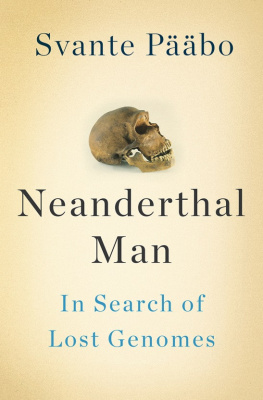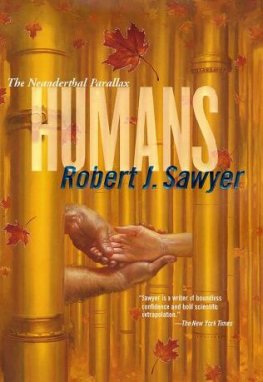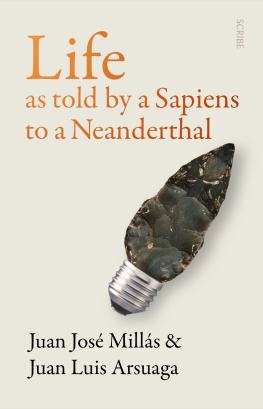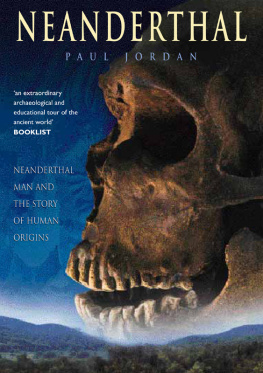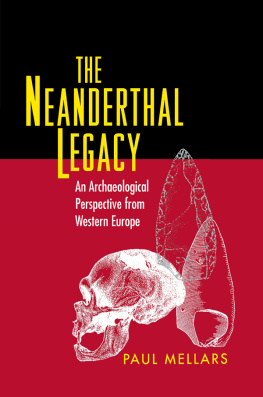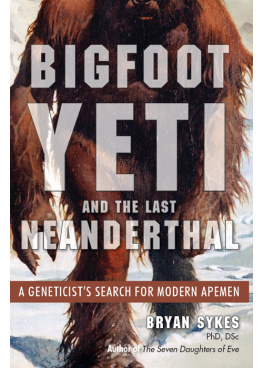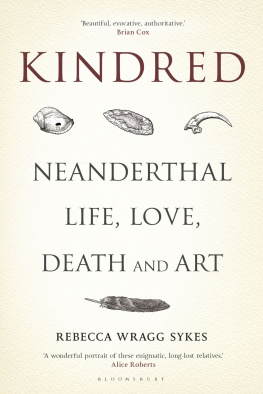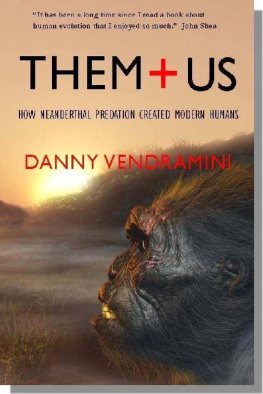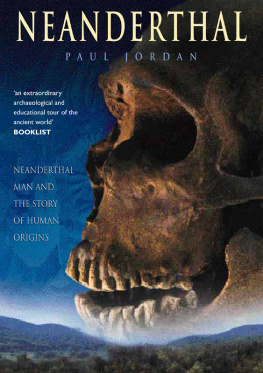

Advance praise for
Neanderthal Man
It is a rare thing to read about an important development in science by its principal innovator, written in the spirit and style in which the research unfolded. Neanderthal Man is a dispatch from the front, and if you want to learn how real science is really done, I suggest you read it.
EDWARD O. WILSON ,
University Research Professor, Emeritus, Har VARD UNIVERSITY
Problem by problem, solution by solution, Pbos gripping account of the discovery of our relationship with Neanderthals brilliantly conveys the thrill and reality of todays big science and the excitement of a major breakthrough.
RICHARD WRANGHAM
Professor of Biological Anthropology, Harvard University, and
author of Catching Fire: How Cooking Made Us Human
Svante Pbos Neanderthal Man is the incredible personal story of one mans quest for our human origins using the latest genome sequence tools. Pbo takes us through his exciting journey to first extract DNA from ancient bones then sequence it to give us the first real glance at our human ancestors, and ultimately shows that early humans and Neanderthals interbred to produce modern humans. This is science at its best and reinforces that contained in each of our genomes is the history of humanity.
J. CRAIG VENTER,
Chairman and President, J. Craig Venter Institute
Copyright 2014 by Svante Pbo
Published by Basic Books,
A Member of the Perseus Books Group
All rights reserved. No part of this book may be reproduced in any manner whatsoever without written permission except in the case of brief quotations embodied in critical articles and reviews. For information, address Basic Books, 250 West 57th Street, 15th Floor, New York, NY 10107-1307.
Books published by Basic Books are available at special discounts for bulk purchases in the United States by corporations, institutions, and other organizations. For more information, please contact the Special Markets Department at the Perseus Books Group, 2300 Chestnut Street, Suite 200, Philadelphia, PA 19103, or call (800) 810-4145, ext. 5000, or e-mail .
Designed by Jack Lenzo
Library of Congress Cataloging-in-Publication Data
Pbo, Svante.
Neanderthal man : in search of lost genomes / Svante Paabo.
pages cm
Includes bibliographical references and index.
ISBN 978-0-465-08068-7 (e-book) 1. Neanderthals. 2. Human population genetics. 3. Genome analysis. I. Title.
GN285.P33 2014
569.986--dc23
2013041877
10 9 8 7 6 5 4 3 2 1
To Linda, Rune, and Freja
Contents
_______________
Preface
_____________
The idea to write this book was first suggested to me by John Brockman. Without his initiative and encouragement, I would never have taken the time to write a manuscript much longer than the short scientific articles I am used to authoring. Once I got started, however, I enjoyed the process. Thank you for making this happen!
Many people have helped me by reading the text and suggesting improvements. First of all I thank my wife, Linda Vigilant, who in addition was always supportive of the endeavor, even if it meant me being away from the family. Sarah Lippincot, Carol Rowney, Christine Arden, and, above all, Tom Kelleher at Basic Books were excellent editors. I hope I have learned from them. Carl Hannestad, Kerstin Lexander, Viola Mittag, and others read parts or all of the text and gave helpful suggestions. Souken Danjo provided hospitality in Saikouji for some of the time I needed to withdraw from the world.
I recount events as I remember them. But I suspect that I may have mixed up or conflated a few specifics here and therefor example, regarding various meetings in and trips to Berlin, to 454 Life Sciences, and so on. Obviously, too, I recount events from my own subjective perspective, trying to give credit (and its opposite) where in my opinion it is due. I am aware that this perspective is not the only way one can view such events. In order not to burden the text with too many names and details, I have refrained from mentioning many persons who were nevertheless important. I apologize to everyone who feels unduly ignored!
Chapter 1
Neanderthal ex Machina
__________________________________
Late one night in 1996, just as I had dozed off in bed, my phone rang. The caller was Matthias Krings, a graduate student in my laboratory at the Zoological Institute of the University of Munich. All he said was, Its not human.
Im coming, I mumbled, threw on some clothes, and drove across town to the lab. That afternoon, Matthias had started our DNA sequencing machines, feeding them fragments of DNA he had extracted and amplified from a small piece of a Neanderthal arm bone held at the Rheinisches Landesmuseum in Bonn. Years of mostly disappointing results had taught me to keep my expectation low. In all probability, whatever we had extracted was bacterial or human DNA that had infiltrated the bone sometime in the 140 years since it had been unearthed. But on the phone, Matthias had sounded excited. Could he have retrieved genetic material from a Neanderthal? It seemed too much to hope for.
In the lab, I found Matthias along with Ralf Schmitz, a young archaeologist who had helped us get permission to remove the small section of arm bone from the Neanderthal fossil stored in Bonn. They could hardly control their delight as they showed me the string of As, Cs, Gs, and Ts coming out of one of the sequencers. Neither they nor I had ever seen anything like it before.
What to the uninitiated may seem a random sequence of four letters is in fact shorthand for the chemical structure of DNA, the genetic material stored in almost every cell in the body. The two strands of the famous double helix of DNA are made up of units containing the nucleotides adenine, thymine, guanine, and cytosine, abbreviated A, T, G, and C. The order in which these nucleotides occur makes up the genetic information necessary to form our body and support its functions. The particular piece of DNA we were looking at was part of the mitochondrial genomemtDNA, for shortthat is transmitted in the egg cells of all mothers to their children. Several hundred copies of it are stored in the mitochondria, tiny structures in the cells, and it specifies information necessary for these structures to fulfill their function of producing energy. Each of us carries only one type of mtDNA, which comprises a mere 0.0005 percent of our genome. Since we carry in each cell many thousands of copies of just the one type, it is particularly easy to study, unlike the rest of our DNAa mere two copies of which are stored in the cell nucleus, one from our mother and one from our father. By 1996, mtDNA sequences had been studied in thousands of humans from around the world. These sequences would typically be compared to the first determined human mtDNA sequence, and this common reference sequence, in turn, could be used to compile a list of which differences were seen at which positions. What excited us was that the sequence we had determined from the Neanderthal bone contained changes that had not been seen in any of those thousands of humans. I could hardly believe that what we were looking at was real.
As I always am when faced with an exciting or unexpected result, I was soon plagued by doubts. I looked for any possibility that what we saw could be wrong. Perhaps someone had used glue produced from cow hide to treat the bones at some point, and we were seeing mtDNA from a cow. No: we immediately checked cow mtDNA (which others had already sequenced) and found that it was very different. This new mtDNA sequence was clearly close to the human sequences, yet it was slightly different from all of them. I began to believe that this was, indeed, the first piece of DNA ever extracted and sequenced from an extinct form of human.
Next page
